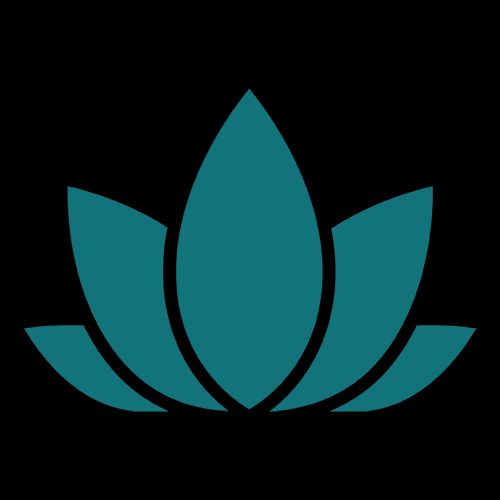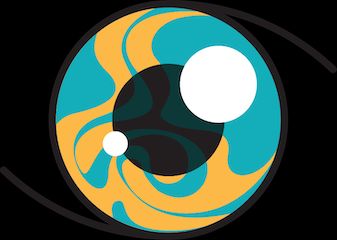Obesity increases your risk of skin problems like rashes, acne, and infections. This can lead to itching, pain, and odors.

Obesity-related skin problems may not be as widely discussed as other obesity complications, but they’re a problem for many people.
According to the
This article will explore why obesity causes skin problems, the skin conditions most common among people with obesity, and potential treatments.
Large pockets of body fat in different areas of your body can cause your skin to fold over itself. You may have several skin folds around your abdomen, groin, and breasts. When skin rubs against skin, the resulting friction can lead to irritation and pain.
The crevices between your skin folds can also trap moisture, further irritating the skin and creating conditions for the overgrowth of bacteria and fungus.
The crevices between skin folds can be difficult to keep clean, even with regular hygiene practices. Crevices can appear on your back, thighs, and groin, where you may not notice them. They can also be deep, which makes them harder to clean thoroughly. This can lead to an accumulation of sweat, bacteria, and fungus.
When moisture and bacteria are present, it can lead to bad smells. It can also lead to painful wounds, skin cracking, and rashes.
If you have severe obesity, pressure on various body areas can also lead to pressure ulcers or bedsores.
Intertrigo is a raw, red rash that develops inside your skin folds. You may notice discoloration or small bumps on the skin. Intertrigo can be uncomfortable, itchy, and painful — especially when it causes sores.
Sores inside the folds of your skin can crust over or ooze. Open sores may increase the likelihood of a secondary infection from bacteria or fungi like Candida albicans.
Intertrigo is caused by friction, moisture, and inflammation. In babies, it’s better known as diaper rash.
Treatment and prevention
Treatment for intertrigo depends on whether the affected skin is infected or not. If the affected skin isn’t infected, a good strategy is to focus on keeping the area clean, dry, and protected. Take special care in the shower or bath to wash the area or use a handheld showerhead and then pat the area dry with an absorbent towel.
Other treatment options
- keeping the affected area dry
- using an antiperspirant
- showering after sweating
- staying cool with a fan or air conditioner
- applying a skin barrier ointment like petroleum jelly
- using talcum or baby powder
- applying topical medications to fight bacteria, such as mupirocin or bacitracin
- using antifungal medications such as over-the-counter (OTC) creams and powders
Candida albicans is a fungal infection that commonly affects the skin. It causes an itchy rash in the skin folds, which appears red on lighter skin tones and purple on darker skin tones. This rash may spread to other areas of the body.
A candida infection can be caused by intertrigo. It can also cause intertrigo.
People with diabetes are also
Fungi grow quickly in moist, dark environments like the crevices between skin folds.
Treatment and prevention
Treatments for candida may
Chafing is a common skin condition, but people with obesity are at higher risk. It’s caused by friction when your skin rubs against your skin or another material. It can happen between the skin folds, but it can also occur anywhere your skin rubs together, like your armpits, the area between your butt cheeks, or your inner thighs.
Chafing can cause pain, redness, and skin irritation. The irritation is not as severe as it is with intertrigo, but chafing can lead to intertrigo.
Prolonged chafing can lead to discoloration and even blisters. People think of blisters as happening only on the feet. But the same chafing process can happen anywhere on your body. These tender, fluid-filled bumps typically heal on their own, but there is a risk of infection.
Treatment and prevention
To reduce rubbing, wearing protective clothing that prevents skin irritation is often helpful. Other options include:
- using lubricants, like petroleum jelly or oils
- applying powders that reduce friction, like baby powder or cornstarch
- wearing sweat-wicking, quick-drying clothing to reduce moisture
- wearing the right type of clothing, such as bike shorts that reduce friction between the thighs
- applying protective bandages over blisters
If you have overweight or obesity, you may have a higher risk of acne on your face or body. Acne usually appears as pimples or red or flesh-colored bumps with white pustules on top. Acne happens when the pores in your skin become clogged.
A
Acne can appear because of hormonal changes that happen in your body when you have excess weight. It can also happen anywhere you sweat and get clogged pores. This includes your:
- chest
- back
- shoulders
- buttocks
- arms
- legs
Treatment and prevention
The treatment of acne can vary because it depends on the severity of your condition. OTC acne treatments like salicylic acid or benzoyl peroxide help most people. You can use a cream or a spray for larger areas.
You can also prevent acne by reducing the likelihood that your pores will become clogged. You can do this by regularly cleaning oily and sweaty skin.
A dermatologist can help guide you on the best treatment, which may require OTC or prescription products.
You may experience increased sweating when you have obesity. You may sweat more because your muscles and cardiovascular system may need to work harder during activity. It can also happen because your body has a larger surface area. The more skin you have, the more places there are to sweat from. This can lead to excessive sweating.
Treatment and prevention
Treatments include:
- using OTC prescription-strength antiperspirants
- wearing loose, breathable clothing
- getting more physical activity to condition your body
- receiving botulinum toxin type A (Botox) injections to reduce sweat production
- undergoing procedures to vaporize or remove certain sweat glands
Keratosis pilaris is a common skin condition characterized by small, rough bumps on the skin.
You may see signs of keratosis pilaris on your upper arms, buttocks, thighs, and cheeks.
Treatment and prevention
Treatments include:
- moisturizers with urea or lactic acid
- topical chemical exfoliants, such as products containing glycolic and salicylic acid
- adapalene or prescription tretinoin
- lasers to treat swelling and redness and reduce discoloration
You can also apply your moisturizer after bathing or showering when the skin is still damp. This allows the moisturizer to lock in the water and keep your skin hydrated.
Acanthosis nigricans refers to the darkening of the skin in the folds and creases of the body, such as the armpits, neck, and groin. It’s often triggered by obesity. But it also
Treatment and prevention
Treatments for acanthosis nigricans include:
- improving insulin resistance
- managing your diabetes
- using prescription creams, ointments, and gels to lighten skin color
- getting laser treatments
- applying OTC retinoids or prescription tretinoin
Skin tags are small, flesh-colored growths hanging off the skin. They’re
Treatment and prevention
Cellulitis is a common bacterial skin infection. It can
A
Treatment and prevention
Left untreated, cellulitis can spread and infect other skin areas.
Treatment for cellulitis usually
Folliculitis is a common skin condition that refers to inflamed or infected hair follicles. It appears as red or flesh-colored, pimple-like bumps on the skin and can occur anywhere except the palms and soles.
Skin-on-skin friction increases your risk of folliculitis. It can also be caused by shaving, excess moisture, and tight clothing.
Treatment and prevention
Treating and preventing folliculitis might include:
- wearing loose clothing
- shaving less and with care
- reducing chafing
- warm compresses
- antifungal and antibiotic medications
Stretch marks occur when your skin stretches due to weight gain, especially rapid weight gain. As your body grows, it puts pressure on your skin and causes it to stretch. Stretch marks aren’t harmful, so they don’t need treatment. But if you have cosmetic concerns, there are some treatment and prevention options.
Treatment and prevention
Some treatment options for stretch marks include:
- topical and prescription creams, such as hyaluronic acid and tretinoin, for early stretch marks
- ultrasound
- chemical peels
- radiofrequency
- pulse dye laser therapy
Here are some things you can do to prevent skin problems:
- Keep your skin clean and dry, especially the areas where your skin folds over.
- Wear loose-fitting breathable clothing to reduce moisture.
- Use a mirror to look inside your skin folds if they feel irritated.
- Keep your skin hydrated and moisturized regularly.
- Wear tighter, sweat-wicking clothing during physical activity to reduce friction and moisture.
- Talk with a doctor who understands your experiences.
Research shows that obesity can increase the chance of some skin problems or increase irritation, particularly due to extra heat and friction.
Consider speaking with a dermatologist or other healthcare professional about treating and preventing obesity-related skin problems.









